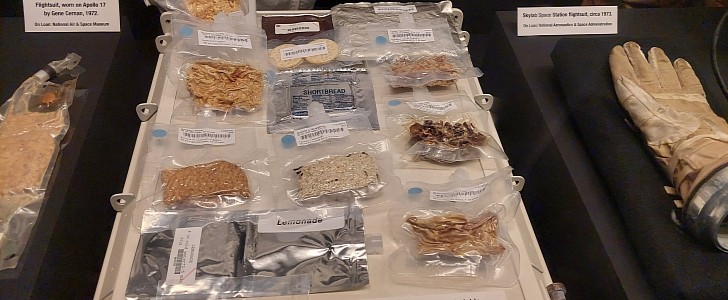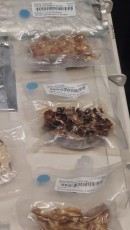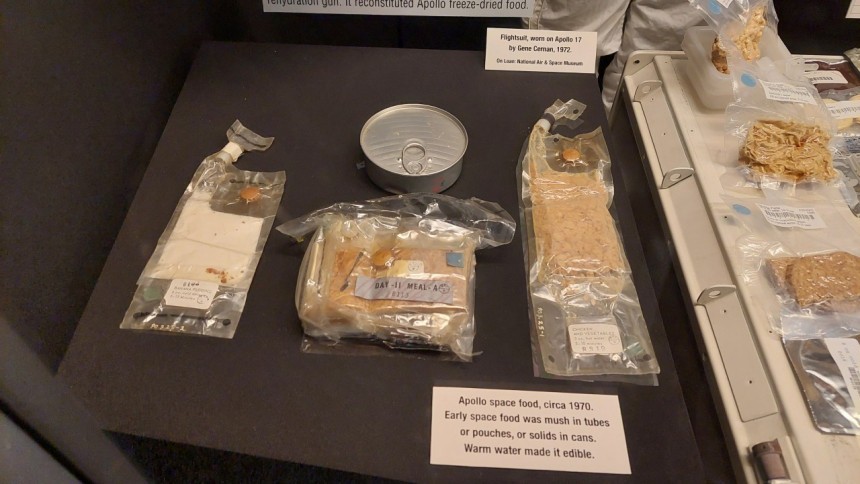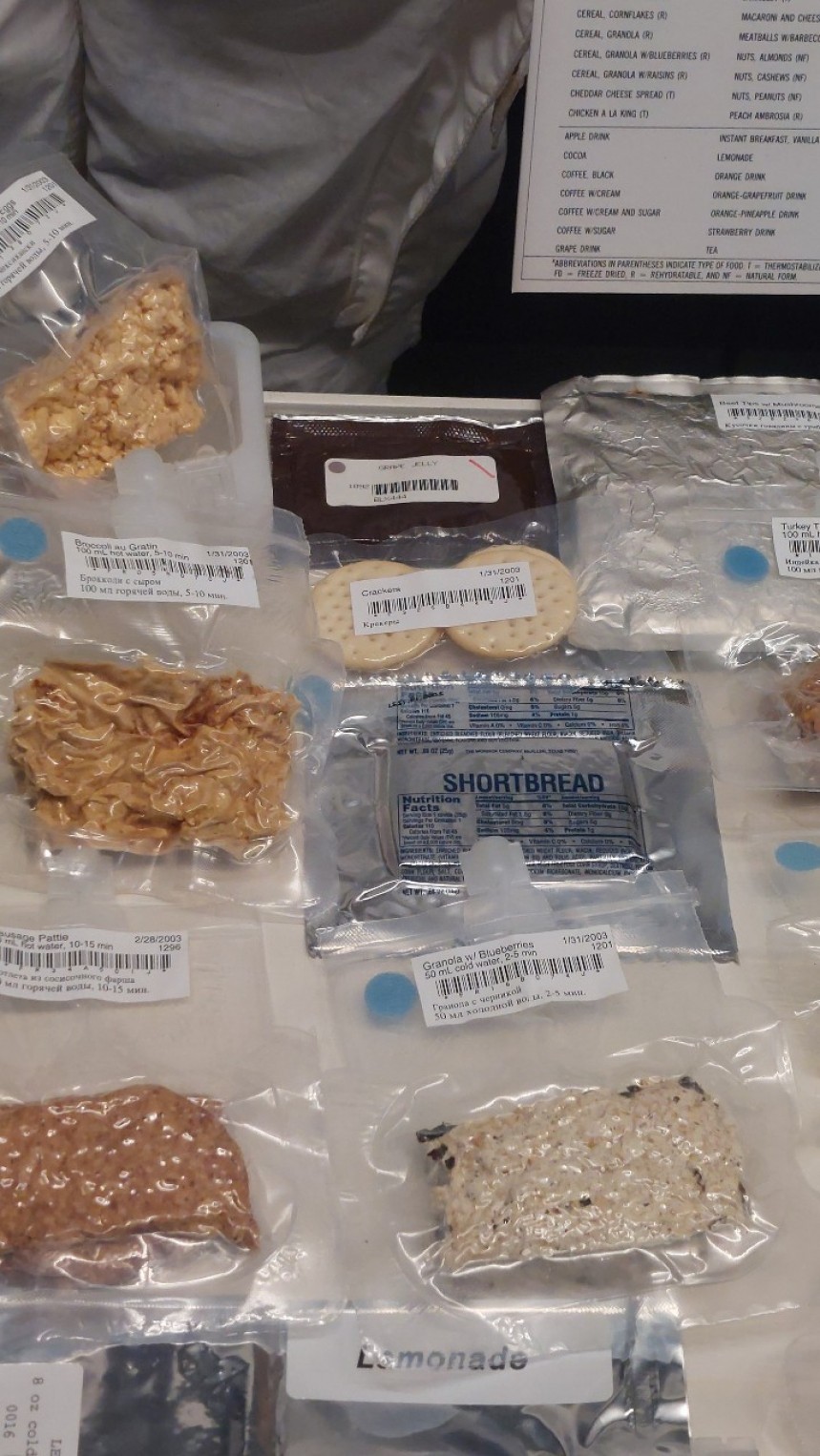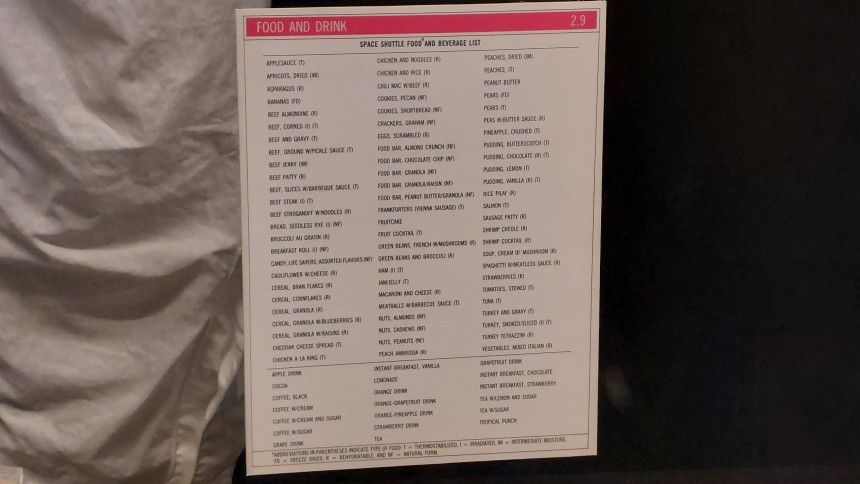Legend has it that the very first food eaten in space was a tube of beef and liver paste, squeezed through an aluminum toothpaste tube into the awaiting open maw of Yuri Alekseyevich Gagarin during the Vostok 1 mission on April 12th, 1961.
It's also been said dessert that afternoon consisted of a chocolate pudding-like substance consumed from a similar aluminum tube. Sounds tasty, right? Probably not. But as space travel advanced in leaps and bounds over the decades, the menu on offer for the average astronaut or cosmonaut has at least become more tolerable.
If your idea of astronaut food is freeze-dried ice cream sandwich bars they sell-in novelty stores for $6 per bar, then one New York museum shows you a much more complete picture. The Cradle of Aviation Museum in Garden City, New York, is home to more amazing aeronautical and space-related artifacts in one place than perhaps anywhere outside of Cape Canaveral or the Smithsonian.
The Long Island region of New York State played an integral role in the Shuttle program with a little from the Apollo era thrown in as well, with engineers from Grumman based in the nearby town of Bethpage contributing items like the horizontal control surfaces to the final design, They even came up with plans to build the entire orbiter themselves, apart from also building the Apollo Lunar Excursion model in-house. Though, they lost that contract contest for the Shuttle.
So then, it makes perfect sense that the Cradle's space food exhibit is more or less focused on the now-defunct Space Shuttle, with a few items from Apollo thrown in as well. By the early 2000s, all shuttles still in operation were using a dehydrated bag system to which hot water could be added and microwaved before being ready to eat.
It must be said, some of the food items on display in this exhibit look particularly ghastly. Especially in this dehydrated form, they all take on the form of something a dog or cat might spit up after a night of getting into the pantry. Going around the horn, we start with a bag of Broccoli au Gratin that appears to have been pre-digested before being inserted into the bag.
Sitting closely to the right of this is a bag of four crackers so dry-looking that we can only hope its crumbs don't clog a ventilation pipe or get stuck in a switch. Up next is an unnervingly grey and gelatinous-looking turkey tetrazzini, followed by a peach ambrosia dessert that looks like something out of the Space Shuttle's waste processing unit.
In spite of how horrific all of this looks in the packaging, a photograph from a 1995 Shuttle mission shows the crew practically drooling as they prepare their meal. One can only assume a full day of EVAs and zero gravity muscle training can make for a wicked case of the munchies.
That must compensate for its unappetizing pre-cooked state a bit. Next to this interesting-looking party spread is a handy guide to all the food and beverages present on any given space mission. From beef jerky to chicken and noodles. From cereal to shrimp cocktail, instant coffee, and lemonade.
Strictly based on the menu and without looking at how it's packaged, you get the impression that Space Shuttle astronauts ate pretty darn well while up in low Earth orbit. But then you take a look at the foil packet labeled "Lemonade" on display with all the other freeze-dried goodness, and you begin to wonder just how refreshing it actually was.
Since the Space Shuttle's retirement, Chinese taikonauts have flown delicacies like traditional yuxiang pork, Kung Pao Chicken, and authentic Chinese herbal tea up to the International Space Station. In 2015, Italian Astronaut Samantha Cristoforetti became the first person in history to sip from a freshly brewed cup of coffee in space. Using a special zero-gravity fluid dynamics machine developed by the Lavazza espresso company.
International cuisine from a slew of international collaborators like Ramen from Japan, Goulash from Hungary and Borscht from Ukraine, Kimchi from South Korea, and Moose Jerky from Sweden have all found their way on board supply ships bound for the ISS. It's all thanks to pioneering research in space-based culinary science that made giant leaps during the days of the vac-packed grey matter on display here at the Cradle of Aviation.
It almost makes you want to pick up one of those astronaut ice cream bars at the gift shop on your way out of the museum. $6 is a small price to pay to feel like you're an astronaut for a few fleeting minutes.
If your idea of astronaut food is freeze-dried ice cream sandwich bars they sell-in novelty stores for $6 per bar, then one New York museum shows you a much more complete picture. The Cradle of Aviation Museum in Garden City, New York, is home to more amazing aeronautical and space-related artifacts in one place than perhaps anywhere outside of Cape Canaveral or the Smithsonian.
The Long Island region of New York State played an integral role in the Shuttle program with a little from the Apollo era thrown in as well, with engineers from Grumman based in the nearby town of Bethpage contributing items like the horizontal control surfaces to the final design, They even came up with plans to build the entire orbiter themselves, apart from also building the Apollo Lunar Excursion model in-house. Though, they lost that contract contest for the Shuttle.
So then, it makes perfect sense that the Cradle's space food exhibit is more or less focused on the now-defunct Space Shuttle, with a few items from Apollo thrown in as well. By the early 2000s, all shuttles still in operation were using a dehydrated bag system to which hot water could be added and microwaved before being ready to eat.
Sitting closely to the right of this is a bag of four crackers so dry-looking that we can only hope its crumbs don't clog a ventilation pipe or get stuck in a switch. Up next is an unnervingly grey and gelatinous-looking turkey tetrazzini, followed by a peach ambrosia dessert that looks like something out of the Space Shuttle's waste processing unit.
In spite of how horrific all of this looks in the packaging, a photograph from a 1995 Shuttle mission shows the crew practically drooling as they prepare their meal. One can only assume a full day of EVAs and zero gravity muscle training can make for a wicked case of the munchies.
That must compensate for its unappetizing pre-cooked state a bit. Next to this interesting-looking party spread is a handy guide to all the food and beverages present on any given space mission. From beef jerky to chicken and noodles. From cereal to shrimp cocktail, instant coffee, and lemonade.
Since the Space Shuttle's retirement, Chinese taikonauts have flown delicacies like traditional yuxiang pork, Kung Pao Chicken, and authentic Chinese herbal tea up to the International Space Station. In 2015, Italian Astronaut Samantha Cristoforetti became the first person in history to sip from a freshly brewed cup of coffee in space. Using a special zero-gravity fluid dynamics machine developed by the Lavazza espresso company.
International cuisine from a slew of international collaborators like Ramen from Japan, Goulash from Hungary and Borscht from Ukraine, Kimchi from South Korea, and Moose Jerky from Sweden have all found their way on board supply ships bound for the ISS. It's all thanks to pioneering research in space-based culinary science that made giant leaps during the days of the vac-packed grey matter on display here at the Cradle of Aviation.
